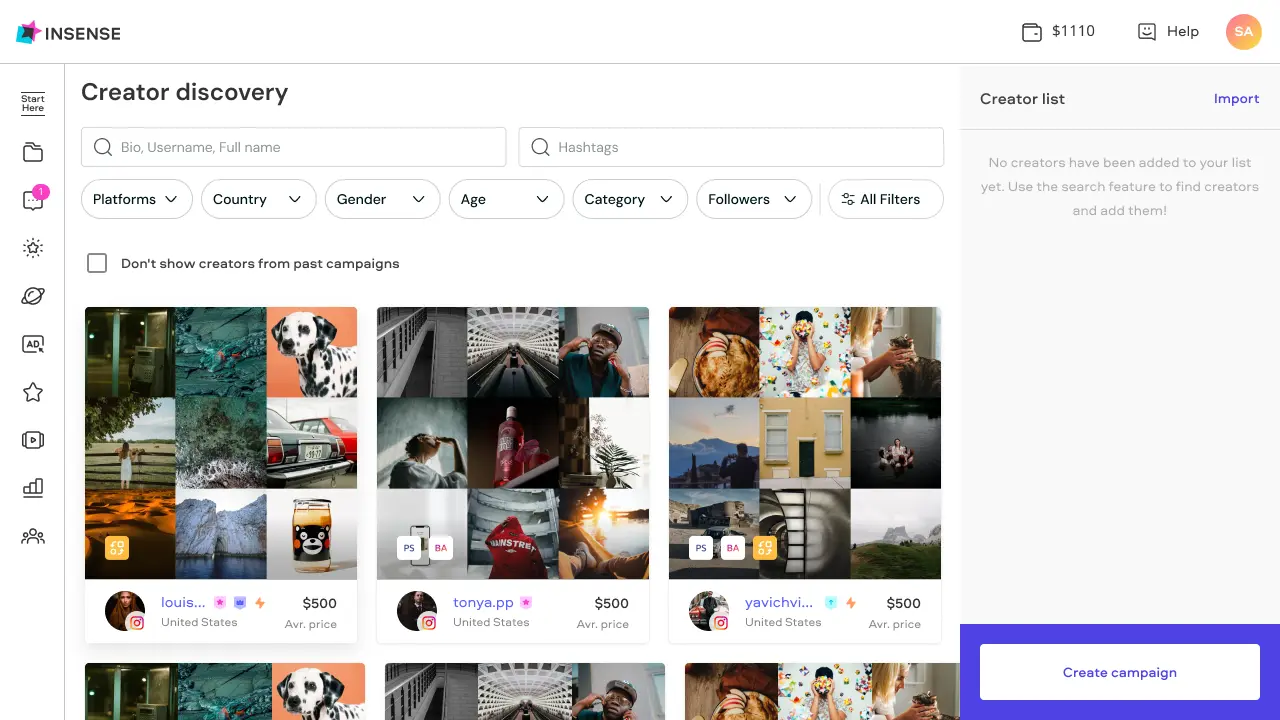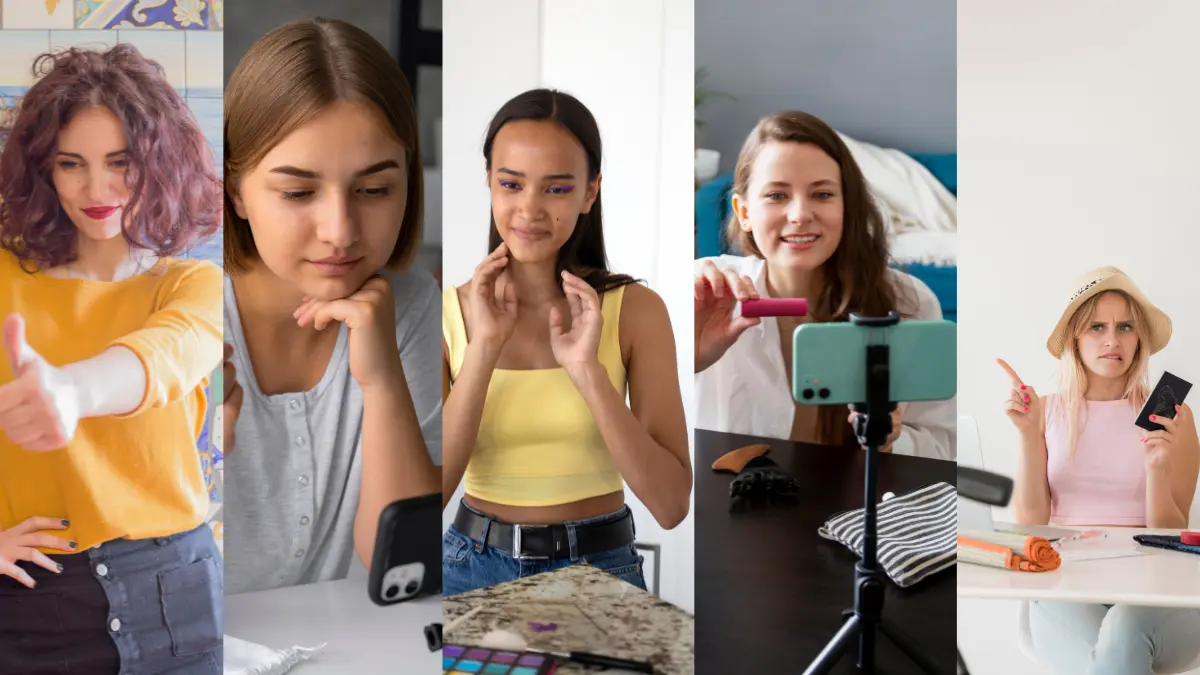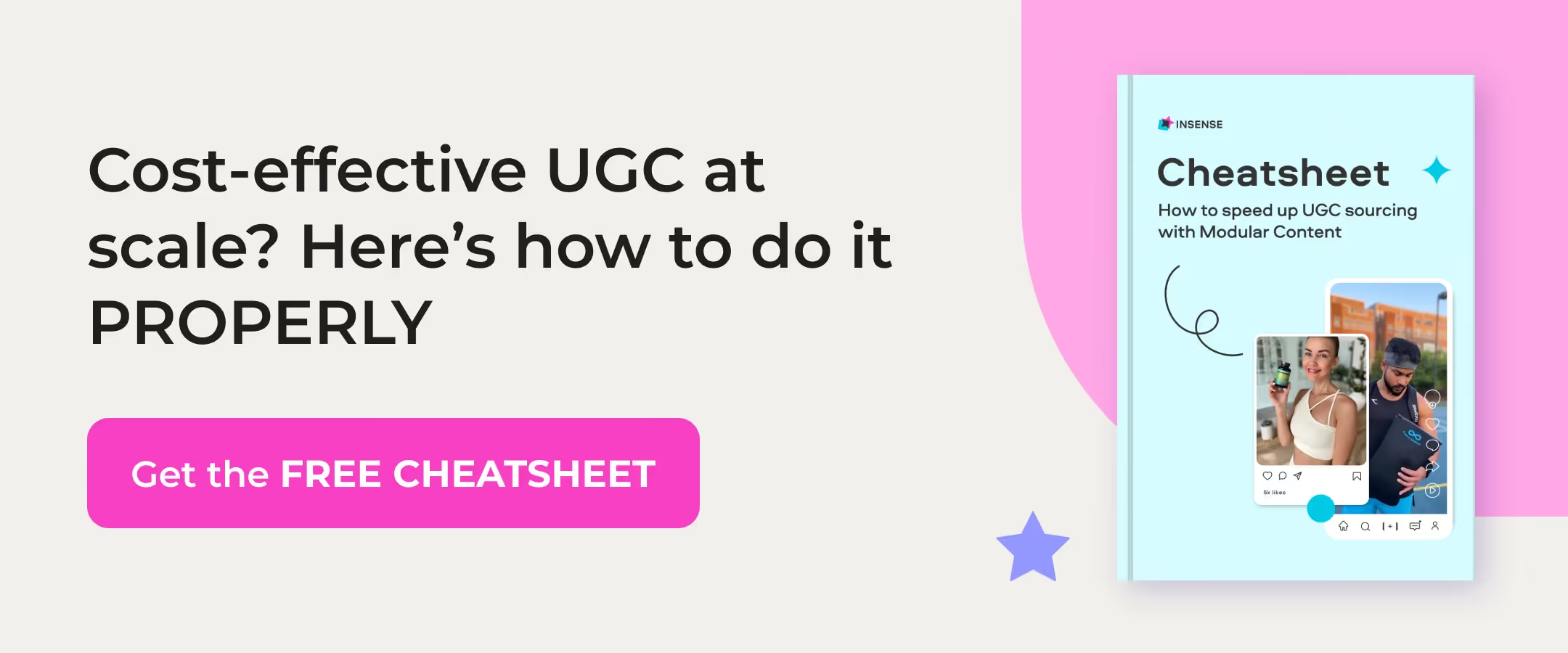Create a Winning UGC Marketing Strategy
In 2022, K18 generated 11.2 billion views on TikTok in just 1 month. The haircare brand ran hashtag campaigns to boost awareness of their products. T
housands of people shared UGC content, following this “hairtok” trend, multiplying the brand’s reach.
There’s no denying that customer-driven conversations about your brand impact your growth.
According to research by MASV, 81% of consumers say user-generated content (specifically video) is more trustworthy than professionally created brand content.
Customers can tell when they're being sold to, making them skeptical of brand promotions.
However, when a customer praises your products and shares images and videos of them on social media, it acts as social proof.
UGC content marketing increases word-of-mouth for your brand, giving you more credibility, and increasing sales.
But you need to do it the right way.
Creating a UGC social media marketing strategy is more than just finding and reposting a few customer photos.
In this blog, we will walk you through the exact steps to create a UGC marketing strategy for your eCommerce brand along with best practices so that you can effectively tap into this powerful channel.
6 Steps to Build a UGC Content Marketing Strategy
Here’s how you can create a UGC content strategy, from setting your goals to execution to scaling your efforts.
Step 1: Define Your UGC Goals and KPIs
First things first — define what you want to achieve with your UGC marketing strategy.
While driving sales is the primary goal of any marketing strategy, UGC plays a more nuanced role in buyer journeys.
Brands usually have multiple goals for their user-generated content campaign.
They can run a UGC campaign to drive more brand awareness on social media and use this UGC content on product pages to build trust.
Here are some common goals that eCommerce brands have with their UGC campaigns:
- Increase trust and authenticity.
- Build loyalty and foster a sense of community.
- Reduce buyer hesitancy.
- Increase social proof.
- Improve ad performance.
- Drive FOMO to influence purchasing decisions.
- Increase your audience reach by leveraging the virality of UGC campaigns.
- Repurpose UGC across marketing channels (website, social media content, ads, etc).
Why do you even need to define your goals?
Without knowing your exact goals, your campaign will be too broad, making it tricky to execute and analyze.
A clear objective ensures that your approach is specific, with clear next steps that work towards your goals.
It makes your analysis more accurate too. If your UGC campaign is to increase brand awareness, you’ll prioritize measuring engagement, not sales.
Next, identify the relevant KPIs to measure your UGC campaign’s effectiveness.
- Understand what your performance looks like before you start your campaign to set a benchmark. This makes it easy to compare your metrics at different stages of the campaign.
- Set up tracking if relevant (like for unique links).
- Check if your data is accurate. You don’t want to be halfway through your UGC campaign and then realize there’s an attribution issue.
Here are some UGC metrics you can monitor based on your goals:
1. Reach and Engagement: How many likes, comments, and shares did the UGC content drive? Measuring this lets you identify the best creators and effective UGC types. You can also look at the number of comments and their quality to understand if your campaign helped in building trust.
2. Conversion: How many people became paying customers through UGC and what drove most conversions? Segment your conversion data to identify performance based on creators, marketing channels, and content format. This will help you identify what’s actually working and what isn’t.
3. Content Diversity: Are you getting one type of UGC or is there a mix of multiple formats? If it’s not diverse enough, you can launch dedicated UGC contests for a specific UGC format. For example, if you mostly receive images, run a campaign asking for Instagram reels and TikTok submissions.
4. Brand Mentions: A great way to measure increased brand awareness and brand advocacy during your UGC campaign is by tracking how often users tag your brand in posts and stories.
5. Ad Performance Using UGC: Compare the performance of your ads using UGC assets versus brand-created content to understand the impact of UGC on clicks, ad spending, and conversions.
Step 2: Identify the Right UGC Creators for Your Brand
Not every user-generated content will be right for your brand. The creators you choose should resonate with your audience. How do you find the right creators?
1. Use the Right Social Media Channels to Look for Creators
For most eCommerce brands, platforms like Instagram, TikTok, Facebook, and YouTube work best.
Fitness brands see a lot of success in collecting UGC from Reddit, but fashion brands are more likely to find the right UGC creators on Pinterest.
Search Instagram and TikTok to see who’s mentioning your brand or using your brand hashtags. You can also check the “Tagged” section on your Instagram profile to find UGCs.
Micro and macro creators with a niche following have a personal connection with their followers. Their UGC looks more authentic and credible to the audience, making them great to partner with.
2. Analyze Your Shortlisted Creators’ Performance
Once you shortlist creators, analyze their suitability for your campaign goals:
Does someone have a huge following but proportionally low engagement? They are less likely to drive results.
You need creators whose content gets active likes, comments, and shares.
Depending on the locations you sell to, you need to look at the creator’s follower demographics, too. If they cater to Australia but you only sell to Germany, your UGC campaigns won’t have meaningful reach.
3. Check Creator Quality and Audience Response
Analyze the authenticity of the creator’s previous social media posts. Do they look salesy or do they convey genuine love for the brand?
Authentic content where the creator seems to honestly enjoy the products is always better than straight-out promotions. You can scan their post comments to understand audience perception better.
Glossier is on a mission to redefine beauty with products that are inclusive, accessible, and celebrate individuality. They reshare high-quality UGC content featuring genuine creators who don’t just talk about the products on camera but use them regularly.

4. Send a Request for Collaboration
Once you’ve found the right creators to work with, ask them if they’d like to partner with you.
Here is a message template that you can use:
“Hey [First Name], we love the content you’ve been posting about [related topic]! Your style fits perfectly with our brand, and we’d love to collaborate with you. We’d be happy to send you a free product in exchange for creating and sharing posts about it. Let us know if you’re interested!”
Manually finding the right user-generated content creators takes a lot of time and effort.
You may end up partnering with a creator who doesn’t align with you.
There’s also the risk of partnership with creators who inflate their follower count with bots. This can make your campaign ineffective.
Simplify your search with tools that help you find vetted creators and set up UGC campaigns, like Insense.
Insense’s creator marketplace lets you choose from 60K+ vetted creators for organic and paid campaigns. You can filter your search based on location, gender, age, ethnicity, etc, to quicken the process.

Each creator's profile also features their past work so that you can look into their engagement metrics, authenticity, and content creation style.
Book a demo to find UGC creators quicker with Insense.
Step 3: Create a Content Brief
Found your ideal UGC creators? Now it’s time to make sure they create content that communicates your brand image and values.
The creators that you’ve chosen may reach your target audience but they may not match your creative style.
While you want to keep the content as natural as possible, give guidelines to your creators so that the content stays on brand.
Here’s how you go about it:
- Share your goal with them. Whether you want creators to just talk about the product (if it’s only for brand awareness) or push a special discount (if you want to drive sales), giving them context ensures they don’t stray from the vision.
- Create a brand style guide, including how to use your logo, preferred color palette, brand tone and voice, typography, etc. This will make it easier for creators to stick to your preferences.
Walmart has a style guide that defines different variations of its logo, color scheme, tone and voice, and even photography and videography guidelines.

- Specify what they should avoid saying in their UGC content. You may not want the content to mention competitors or another brand in a negative light.
- Mention your preferred types of content.
- Offer creators unique promo codes to share with their audience. Specify that they subtly plug these offers within their posts.
Insense helps you create the perfect UGC campaign brief. This brief automatically matches you with the right creators who align with your creative style.
You can also pick from brief templates to quickly start your search for the right creator.
.webp)
Step 4: Simplify Collection and Secure Usage Rights
Once your campaign is live, you need to make sure that you’re collecting this content for easy repurposing and have the rights to use it for your brand.
You can’t just pick up UGC content and use it in your campaigns without permission, even if it features your products.
These best practices simplify the process:
- Encourage followers, customers, and UGC creators to use your unique hashtag when they share content on social media platforms. This keeps your UGC organized so that you can find them easily.
- When you find user-generated content for your brand, ask permission from the original creator to use their UGC. You can message them on the platform or send an email if they’ve mentioned their email address in their bio.
Here is a template you can use:
"Hi [Creator’s Name], I’m [Name] from [Brand Name]. We love your content and want to feature it on our [Website/Social Media/Ads]. Would you be open to that?
- While posting the content, tag the creator to give them credit.
- Offer them incentives like a discount or freebies on their next order to reward them.
- If you want to set up a regular collaboration with the creator, it’s better to discuss compensation and have a usage rights agreement in place.
- If you’re partnering with the creator, ask them to make it a collaborative post with your brand so that it’s published from both your profiles.
Aerie, a clothing brand, features UGCs on its Instagram handle regularly. It’s become so common that creators and customers publish collaborative posts with the brand.

💡Pro tip: Always take a screenshot of the creator’s approval (especially for Instagram comments) to keep a record of permission.
Insense’s UGC campaign manager simplifies how you organize and manage customer content efficiently.
- Pre-approvals for content so that you don’t need to wait for usage approval before downloading.
- Get access to both the raw and edited footage to give you full freedom to optimize your UGCs.
- Struggling to keep your UGC organized? With our creative library, you can keep all your UGC assets and campaigns safe and access them easily from your dashboard.
.webp)
Step 5: Amplify UGC With Paid and Organic Strategies
Combining organic and paid strategies for UGC marketing ensures maximum impact.
- Don’t run multiple ads on every platform. Instead, examine where your organic reach is low and target audiences on those platforms with UGC-driven ads.
- Showcase UGCs on your website in a dedicated Wall of Love, review section, or shoppable lookbooks.
Colorscience has placed customer videos on its home page and product pages, using social proof to increase brand trust and show how real customers use their products.

- Turn UGCs into shoppable posts for Instagram and TikTok Shop.
- Include them in your email marketing campaigns to let customers know about products they haven’t discovered yet or to promote new launches.
- Share stories featuring real people using your products across different channels.
- Retarget potential customers who abandon their carts with UGC ads to build more trust and nudge them to complete their purchases.
💡Pro Tip: UGC-based ads also feel less salesy, performing better. However, test its effectiveness before investing in a specific format. Run multiple small-scale ad campaigns using different UGC styles (customer pictures, videos, before-and-after images, etc). Double down on the campaigns that perform best.
Using Insense, you can launch both organic campaigns and UGC ads for different social media platforms (TikTok, Instagram, Facebook, etc), letting you manage all your campaigns in one place.

Step 6: Measure, Optimize, and Scale Your UGC Strategy
Remember when you identified your KPIs when you started planning your UGC campaign? Now that you have active UGC campaigns, it’s time to revisit these metrics.
Measure your campaign's quantifiable performance against broader goals:
- Brand Awareness → More mentions, shares, and reach.
- Engagement → Higher likes, comments, and interactions.
- Conversions → More clicks, CTR, sign-ups, or purchases.
- Community Growth → Increase in followers, brand loyalty, and advocacy.
Integrating a social network monitoring tool within your workflow will give you real-time updates about your campaign performance. You can use it to:
- Run competitor analysis for benchmarking.
- Conduct sentiment analysis to understand how audiences perceive your brand.
- Measure reach, engagement, and interactions.
- Track click-through rates for each post for easy comparison.
You can then make strategic adjustments based on your findings to optimize your budget and improve its ROI:
- Eliminate underperforming channels and close partnerships with UGC creators who aren’t performing well.
- Double down on high-performing creators, platforms, and content styles to scale your campaign.
Use UGC to Increase Conversions For Your Brand
You can’t drive tangible results through UGC marketing overnight. You need to be consistent with your marketing efforts, actively engaging customers, measuring your performance, and adjusting your approach accordingly.
To maximize your impact, invest in a UGC marketing tool like Insense. We help you manage your UGC strategy end-to-end:
- Find creators who are vetted and can appeal to your target audience.
- Leverage per-approved user-generated content for marketing.
- Curate creative briefs to make sure every post aligns with your brand identity.
- Run organic promotions, paid ads on Meta platforms, and TikTok Spark ads.
Brands like Bones Coffee used Insense to collect 50+ UGC content from customers, which they used to run high-performing ads and generate an additional $25K in revenue in 1 month.

Book a demo with Insense today and see how UGC content marketing can be used to boost brand awareness and drive more revenue for your eCommerce business.
UGC Content Marketing Strategy - FAQs
What is User Generated Content?
User-generated content is content that customers create about a brand and its products. These can be pictures, videos, tutorials, and text-based or visual product reviews. Brands often collect and share this content as social proof.
What Type of UGC Performs Best for eCommerce Brands?
Since shoppers want to see how the product looks, photos and videos are the best kind of UGC for eCommerce brands. Content showing how customers use a product in real-life situations helps shoppers understand the product and how it fits their needs.
Whether it’s through TikTok or Instagram videos (which have high engagement) or pictures on the website or social media, you can use UGC content in different ways:
- Video Reviews and Testimonials: These build credibility by sharing honest customer experiences.
- Unboxing and First Impressions: By providing a real-world look at products, potential buyers get to feel the excitement of receiving their package.
- Before-and-After Transformations: Best for beauty, skincare, fitness, and home improvement brands, they show the impact of your product.
- Customer Using the Product in Real Life: Potential buyers can visualize products and how they can be used every day.
How Can Small Businesses Encourage Customers to Create UGC?
Small businesses have one advantage— their customers are huge advocates for their brands. You can encourage customers to create UGC with some cost-effective strategies, like:
- Ask them how they enjoy your products and collect feedback.
- If customers are huge fans of the brand, ask them to share a video about their experience, how they use your product, etc.
- Actively engage with customers on social media platforms.
- Make customers the main spokespeople on social media, centering your narratives around them.
- Repost UGC on Instagram and other social handles with branded hashtags.
- Start a UGC contest where the best submissions get a prize.
- Run seasonal and themed UGC campaigns.
Is UGC More Effective than Traditional Influencer Marketing?
User-generated content and influencer marketing each have their strengths.
UGC is more organic and authentic than other digital marketing methods, building brand trust.
Influencers have a large audience that trusts their recommendations, boosting your brand awareness and conversion rates. However, influencer marketing costs more than UGC marketing.
Depending on your budget and your goals, it’s ideal to test both UGC and influencers to identify which strategy works best to grow your eCommerce business.
How Do I Align UGC with My Brand’s Messaging?
While you can’t control the kinds of UGC that customers share on social media, you can make sure they align with your brand’s messaging when you run UGC contests or partner with creators.
Create a style guide and share them while promoting your campaign. These guidelines can define your brand values, colors to be used, or even things to avoid (like the kind of language used or clothes worn).
For contests, mention that every submission should follow these rules to enter the contest. You can also make your contest around a specific theme or topic that upholds your messaging, encouraging customers to create different types of content around it.



.avif)






